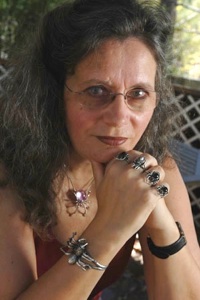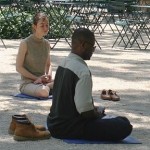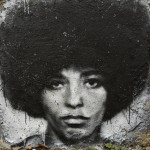Ritual often seems like an activity designed only for interaction with the preternatural or the supernatural. However, in non-literate (oral) cultures, it can have a mnemonic function – to remember and pass on traditional lore, about how to grow and manage crops, about animal and plant species, how to interact with the land, how to use tools.
Lynne Kelly is an Honorary Visiting Research Fellow at LaTrobe University. She is researching the ways in which knowledge is transmitted in non-literate cultures.
In a discussion on ritual on the British Archaeology mailing list, she wrote:
My research is into the way non-literate cultures learn, store and transmit information – vast amounts of it – when they don’t have writing. I then apply that to the archaeological record. A wide range of apparently enigmatic objects become very practical when the memory systems used are understood. The deliberate destruction or disposal of objects is common when there is no initiate suitable to take over the object. Unfortunately, it all takes too much to explain in an email. It is all to do with preserving the critical survival information accurately, among other things. Think of initiation as being initiated into higher and higher levels of a knowledge system, much of which is practical. I draw particularly (but far from exclusively) on our Australian Aboriginal hunter-gatherer cultures.
To give one example of the way indigenous rituals can appear superficial, but aren’t, I’ll use a Pueblo example because it is so beautifully recorded. Alfonso Ortiz in ‘The Tewa world: space, time, being, and becoming in a Pueblo society‘ (1969) talks a lot about the stories of the Corn Mothers and the variously coloured Corn Maidens. Lots of ‘rituals’, many of which are restricted to a select group of initiated males.
Ortiz also suggests, in later writing, that you read Richard I. Ford, an ethnobotanist. Ford describes the same rituals – ceremonies – rigidly repeated acts – in terms of the outcome. Effectively, these ritual performances ensure that multiple varieties of corn, each known by the different colour, have been maintained pure over centuries, if not a lot longer. These are the descendant of the Ancestral Puebloan (Anasazi) cultures. Careful selection and planting of multiple varieties means that no matter how bad the weather that season, some corn will produce food. Corn cross-pollinates very readily, so it is quite complex to ensure all varieties are maintained pure. Consequently, Ford titled the paper ‘The colour of survival’, (1980), Discovery, pp. 16-29. [Not the common magazine, Discovery, but an academic journal.] Ford suggests you read Ortiz to get the Puebloan way of describing the same events and outcomes.
I have covered the Puebloan knowledge system and associated ‘enigmatic’ objects in the thesis, and have plenty more examples like this from other cultures. For example, think of ‘Hunting magic’ as ceremonies which remind all of the group about strategies … and so it goes on. Knowledge is stored so differently by cultures without writing that the pragmatism is often disguised and it is easy to see only simplistic ‘religious’ reasons as the purpose for the ceremonies. All the oral cultures I explored integrate the secular and the sacred so the two become almost indistinguishable.
If you think about it, contemporary Pagan rituals are also designed to transmit knowledge – to enable people to understand sacred stories from within, by re-enacting them; to transmit knowledge of magic, symbolism, and mythology. This also got me thinking about how ritual could be used to transmit botanical knowledge, or astronomy, or other scientific information. I once did a ritual about quantum mechanics, so why not? Learning through ritual engages the right hemisphere of the brain as well as the left, so is probably a more effective way to transmit knowledge.
[Note: the above quote is used with Lynne’s permission. Her research will soon be published as a book.]
[Photo credit: Lynne Kelly, used with permission]













